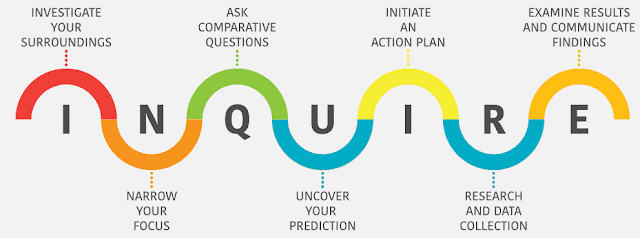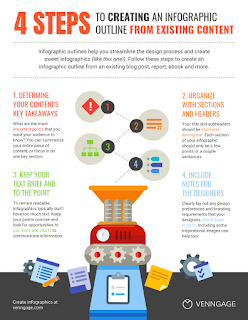Inquiry Based Learning
This week’s blog post was inspired by a presentation I attended this week with Daniel Dillon. Our internet for educators class at Brandon University Skyped him in from Flin Flon, MB!
He is based out of Flin Flon, Manitoba. Growing up he spent his time mostly outdoors exploring and doing hands on activity. He started out as a carpenter working to set up for car shows, etc. But it was this upbringing that inspired his inquiry-based learning passions within his classroom. He wanted to provide an education that allowed students to take their passions and interests to learn and get credits for it. He wanted a classroom that involved student discussion, allowed to self expression and movement. Then two years ago, this came to a reality when Dillon was inspired by the book The 20 Times Project written by Kevin Brookhouser (you can get your copy here) to completely revolutionize his classroom. In this project students take their interests and passions and explore, discover and learn about it. Then over a course of time they were to present to the public, friends, family, community, etc. with the expectation of teaching the school staff how to use it and incorporate it into the curriculum and classrooms.
Dillon's style of inquiry-based learning takes students interests, curiosity, and passion and makes it educational. It isn’t necessarily related to the curriculum but uses the major GLO’s and processes to relate what is learnt in class and apply it to life skill making it relevant for students. One of his projects had a student collect jerseys from the Flin Flon Bombers hockey team to make a quilt. The inspiration came because he was cold during the winter. The student wrote a letter to the hockey team requesting the used/outdated jerseys, cut them into squares and learnt how to sew from his grandma to create the quilt. Another student was interested in 3-D printing. He wrote letters to community organization to fund the project; fortunately, a company funded the compete $2,000 project with the request to receive the first printed object. The student had to research the project, collect data, find a mentor for the project, provide educational uses for it and eventually at the end of the term present it publicly to community members, mayor, business owners, teacher and administration. It’s big picture learning. He printed a rotary wheel as a representation of the organizations logo.
Now this is great and all, but to use technology effectively and efficiently requires training. That’s what makes the projects unique. It gives students accessibility to supports and lets them see where their passions take them. It gives them power to take control of their learning and use it for more learning in the classroom. Dillon gave a couple examples from his class; a student did a project about virtual reality which eventually led to a teacher buying a NASCAR simulator that helped students practice driving and another teacher used the same virtual reality equipment to help students learn how to ski before their trip to Assessippi Ski Resort. Apparently the students said it was just like the real thing and they had a very small learning curve on the slopes.
Inquiry based learning is very much a buzzword in education. But I think it is a great start to revolutionizing the traditional education system. I love the way it takes students passions and interests and gives students opportunities to learn important processes and ideas and make them relevant and applicable, making learning authentic. Don’t get me wrong this will be challenging and I think it is a process. Not every student starts off ready to take on a large project like some of Dillon’s, but overtime with scaffolding and hard work it can be possible to guide your students how to learn and get them to the point where they are in charge of their education.
Mr. Danial Dillon is on the forefront of education, especially inquiry-based learning.
He is based out of Flin Flon, Manitoba. Growing up he spent his time mostly outdoors exploring and doing hands on activity. He started out as a carpenter working to set up for car shows, etc. But it was this upbringing that inspired his inquiry-based learning passions within his classroom. He wanted to provide an education that allowed students to take their passions and interests to learn and get credits for it. He wanted a classroom that involved student discussion, allowed to self expression and movement. Then two years ago, this came to a reality when Dillon was inspired by the book The 20 Times Project written by Kevin Brookhouser (you can get your copy here) to completely revolutionize his classroom. In this project students take their interests and passions and explore, discover and learn about it. Then over a course of time they were to present to the public, friends, family, community, etc. with the expectation of teaching the school staff how to use it and incorporate it into the curriculum and classrooms.
Dillon's style of inquiry-based learning takes students interests, curiosity, and passion and makes it educational. It isn’t necessarily related to the curriculum but uses the major GLO’s and processes to relate what is learnt in class and apply it to life skill making it relevant for students. One of his projects had a student collect jerseys from the Flin Flon Bombers hockey team to make a quilt. The inspiration came because he was cold during the winter. The student wrote a letter to the hockey team requesting the used/outdated jerseys, cut them into squares and learnt how to sew from his grandma to create the quilt. Another student was interested in 3-D printing. He wrote letters to community organization to fund the project; fortunately, a company funded the compete $2,000 project with the request to receive the first printed object. The student had to research the project, collect data, find a mentor for the project, provide educational uses for it and eventually at the end of the term present it publicly to community members, mayor, business owners, teacher and administration. It’s big picture learning. He printed a rotary wheel as a representation of the organizations logo.
Now this is great and all, but to use technology effectively and efficiently requires training. That’s what makes the projects unique. It gives students accessibility to supports and lets them see where their passions take them. It gives them power to take control of their learning and use it for more learning in the classroom. Dillon gave a couple examples from his class; a student did a project about virtual reality which eventually led to a teacher buying a NASCAR simulator that helped students practice driving and another teacher used the same virtual reality equipment to help students learn how to ski before their trip to Assessippi Ski Resort. Apparently the students said it was just like the real thing and they had a very small learning curve on the slopes.
Inquiry based learning is very much a buzzword in education. But I think it is a great start to revolutionizing the traditional education system. I love the way it takes students passions and interests and gives students opportunities to learn important processes and ideas and make them relevant and applicable, making learning authentic. Don’t get me wrong this will be challenging and I think it is a process. Not every student starts off ready to take on a large project like some of Dillon’s, but overtime with scaffolding and hard work it can be possible to guide your students how to learn and get them to the point where they are in charge of their education.
Until next time,




Comments
Post a Comment